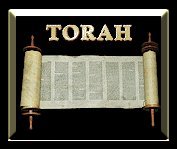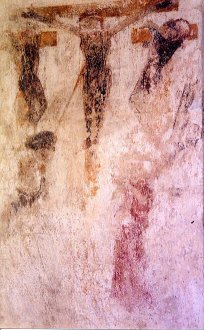The Ancient Hebrew Culture
Many people mentioned in the Bible lived this nomadic lifestyle including: Abraham, Isaac, Jacob, Moses and David. Here we will look at the various aspects of this ancient culture.
As the Hebrew language is closely related to this lifestyle, we will also show the connection between their words and culture often missed because of a lack of cultural understanding

|
In the world, past and present, there are
two major types of cultures: the Hebrew (or eastern) culture and the Greek
(or western) culture. Both of these cultures view their surroundings,
lives, and purpose in ways which would seem foreign to the other. With the
exception of a few Bedouin
What happened to this ancient Hebrew thought and culture? Around 800 BCE*, a new culture arose to the north. This new culture began to view the world very much differently than the Hebrews. This culture was the Greeks. Around 200 BCE the Greeks began to move south causing a coming together of the Greek and Hebrew culture. This was a very turbulent time as the two vastly different cultures collided. Over the following 400 years the battle raged until finally the Greek culture won and virtually eliminated all trace of the ancient Hebrew culture. The Greek culture then in turn influenced all following cultures including the Roman and European cultures, our own American culture and even the modern Hebrew culture in Israel today.
As 21st Century Americans with a strong
Greek thought influence we read the Hebrew Bible as if a 21st Century
American had written it. In order to understand the ancient Hebrew culture
in which the Tanakh* was written in, we must examine some
of the differences between Hebrew and Greek thought.
The term "common"
simply means that this is the most frequently used calendar system:
the Gregorian Calendar. There are many
religious calendars
in existence, but each of these are normally in use in only a small
geographic area of the world -- typically by followers of a single
religion. *
Groups in favor of
CE/BCE: Although C.E. and B.C.E. were originally used mainly within theological writings, the terms are gradually receiving greater usage in secular writing, the media, and in the culture generally. This is another way of saying that we/they are being "politically correct" -- we want to communicate ideas while being civil and considerate to people of all religious traditions. However, there is nothing to prevent a person from defining C.E. and B.C.E as "Christian Era" and "Before the Christian Era" if they wish. (The Abbreviations Dictionary does exactly this.) Now, back to Ancient Hebrew Culture...
Greek thought views the world through the mind (abstract thought). Ancient Hebrew thought views the world through the senses (concrete thought).
Concrete thought is the expression of
concepts and ideas in ways that can be seen, touched, smelled, tasted
and/or heard. All
Abstract thought is the expression of concepts and ideas in ways that can not be seen, touched, smelled, tasted, or heard. Hebrew never uses abstract thought as English does. Examples of abstract thought can be found in Psalms 103:8, “The LORD is compassionate and gracious, Slow to anger, abounding in love.” As you noticed I said that Hebrew uses concrete and not abstract thoughts, but here we have such abstract concepts such as compassionate, gracious, anger, and love in a Hebrew passage. Actually these are abstract English words that translated the original Hebrew concrete words. The translators often translate this way because the original Hebrew makes no sense when literally translated into English.
Let us take one of the abstract words above
to demonstrate how this works. Anger, an abstract word, is actually the
Hebrew word
Appearance vs. Functional DescriptionGreek thought describes objects in relation to its appearance. Hebrew thought describes objects in relation to its function. A deer and an oak are two very different
objects and we would never describe them in the same way with our Greek
form of descriptions. The Hebrew word for both of these objects is
A deer stag is one of the most powerful animals of the forest and is seen as "a strong leader" among the other animals of the forest. Also the oak tree's wood is very hard compared to other trees such as the pine which is soft and is seen as a "strong leader" among the trees of the forest. Notice the two different translations of
the Hebrew word When translating the Hebrew into English, the translator must give a Greek description to this word which is why we have two different ways of translating this verse. This same word is also translated as a "ruler" in 2 Kings 24:15, a man who is a strong leader. Another example of Greek thought would be the following description of a common pencil, "It is yellow and about 8 inches long." A Hebrew description of the pencil would be related to its function such as, "I write words with it." Notice that the Hebrew description uses the verb "write" while the Greek description uses the adjectives "yellow" and "long." Because of Hebrew's form of functional descriptions, verbs are used much more frequently than adjectives.
|
I pray this gives you insight as to how our Greek/Western/American thinking has influenced our understanding and misunderstanding of Scriptures. As Apostolic/Christians it is essential for us to understand the roots of our faith. (And this is a start!) We must gain an understanding of the concept of abstract and concrete in the thinking processes.
We must remember that we are attuned to sensory perception that was created by God Himself. We are impacted by what we see, hear, smell, touch, and taste. Our faith, therefore, is not some abstract mental exercise. For in Him we live, and move, and have our being ... learning ever learning!
"As the deer panteth after the water brooks, so panteth my soul after thee, O God." Psalm 42:1

Sha'aloo shalom Yerushalayim
Pray for the Peace of Jerusalem! (Psalm 122:6). ...
In His service, bj
 nomadic
tribes living in the Near East today, the ancient Hebrew culture has
disappeared.
nomadic
tribes living in the Near East today, the ancient Hebrew culture has
disappeared. 



 five
of the senses are used when speaking, hearing, writing, and reading the
Hebrew language. An example of this can be found in Psalms 1:3, “He is like
a
five
of the senses are used when speaking, hearing, writing, and reading the
Hebrew language. An example of this can be found in Psalms 1:3, “He is like
a 


